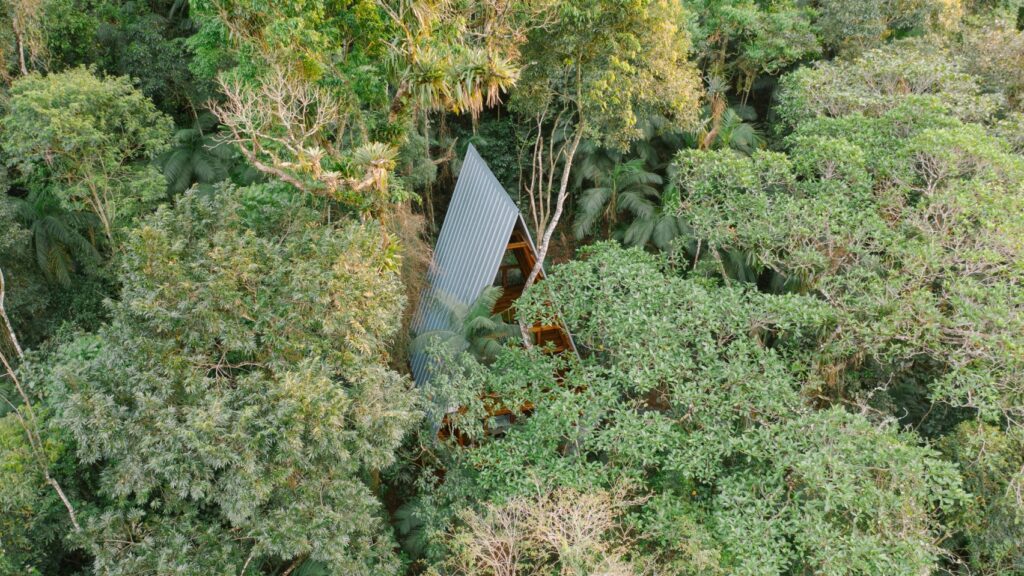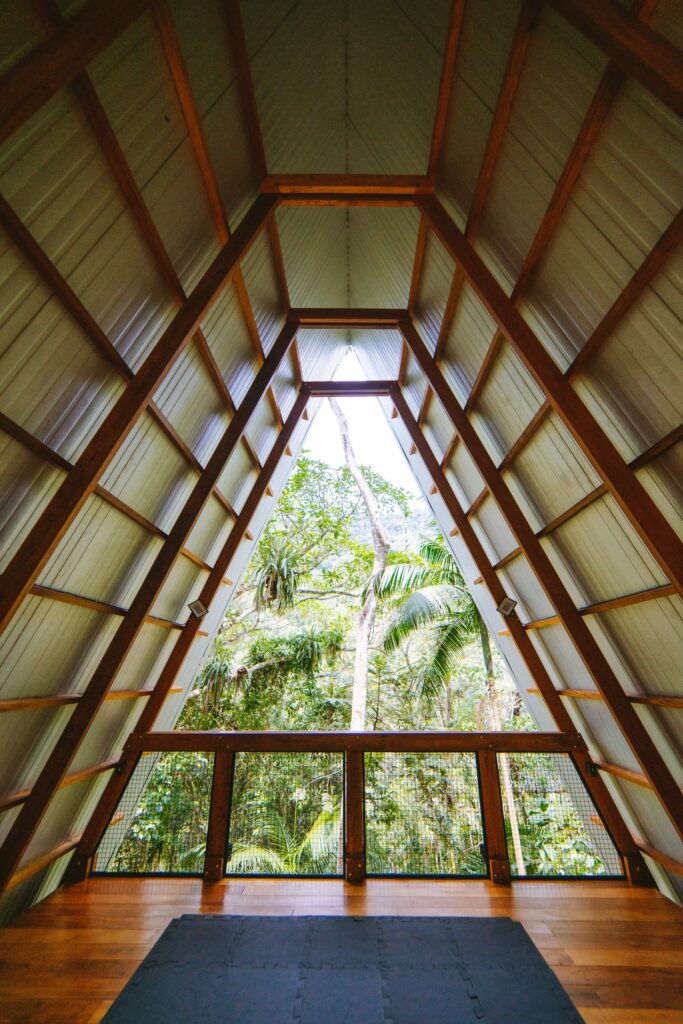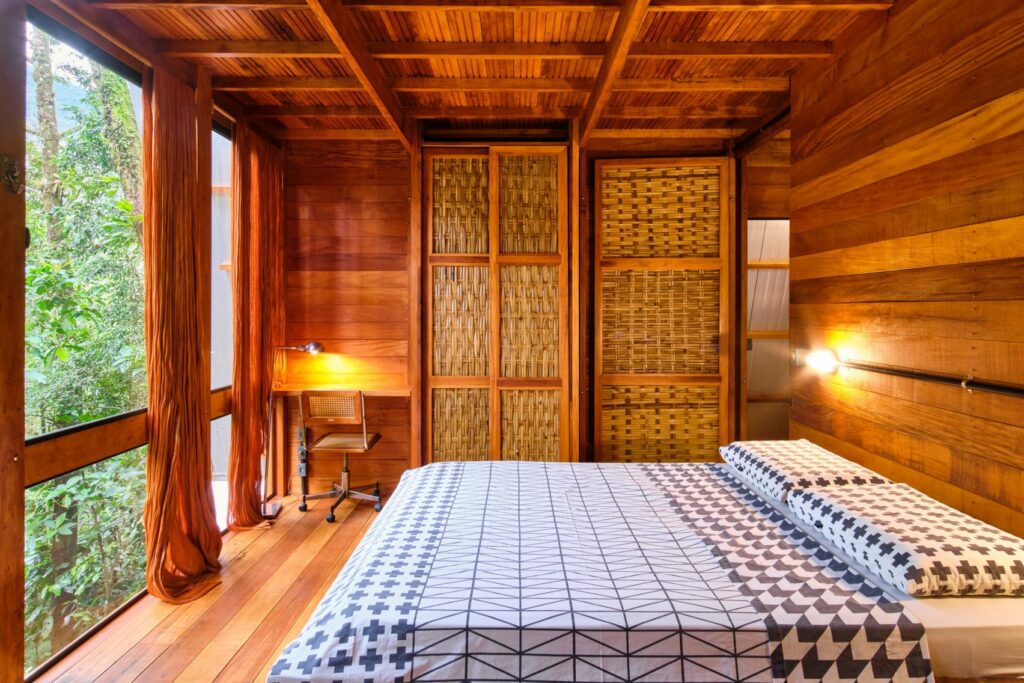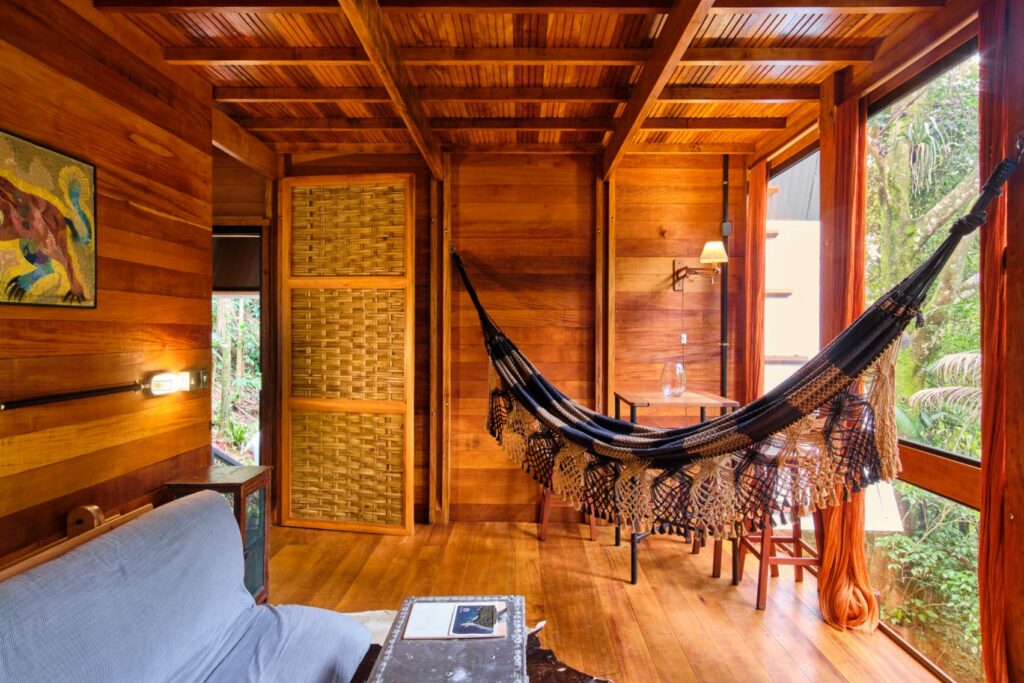When coronavirus broke out, Marko Brajovic took his wife, two children and dogs to live in a house he designed in the Brazilian part of the Atlantic Forest. He built the Monkey House cabin in its grounds as a guest house for friends to stay in.

“Monkey House is meant for hosting friends and as a holiday house for short and middle term rentals on the Airbnb platform.,” Marko said.

He decided to build the cabin up on stilts so it sits amongst the trees after observing the return of some beloved local wildlife. “A few years ago the monkeys that lived at the foot of Serra in Paraty disappeared,” explained Brajovic. “It was said that it was due to yellow fever that supposedly spread among the primate families. I don’t know, we were very sad. In 2020, at the beginning of the pandemic, the day we started thinking about a house connecting to the magnitude of the trees, there they reappeared,” he continued. “A family of Capuchin monkeys, a complete tribe! They came back and taught us the way, where and how to design our project.”
Windows cover the front of the cabin. Its topmost level is open at the front and back yet sheltered by the apex of the roof, forming a semi-sheltered terrace amongst the treetops.

The architect selected Garapeira wood – a tropical hardwood that is dark in color – for the cabin’s frame. The cabin’s exaggerated gable roof is made of Galvalume, a treated type of corrugated metal.
The pandemic made constructing Monkey House trickier than usual. “Strict sanitary conditions limited our logistics and our team to only three constructors,” explained Brajovic. “The second challenge was to build in height in the middle of the forest with ready-made scaffolding on-site, as there were no suppliers delivering any equipment due to pandemic and as well the area being difficult to access.”

Inside the cabin is split over two levels, with a large living area and a smaller galley-style kitchen and dining area.

Upstairs there is a bedroom and bathroom. The living room can be used as an extra bedroom for guests.

Interiors feature more wood, with bamboo elements and curtains made by local communities from fishing nets. Furniture is a mixture of Japanese design and objects made by the Guaraní, indigenous people from across southern Brazil and Paraguay.

Photography is by Rafael Medeiros and Gustavo Uemura. You can read the original article at www.dezeen.com
